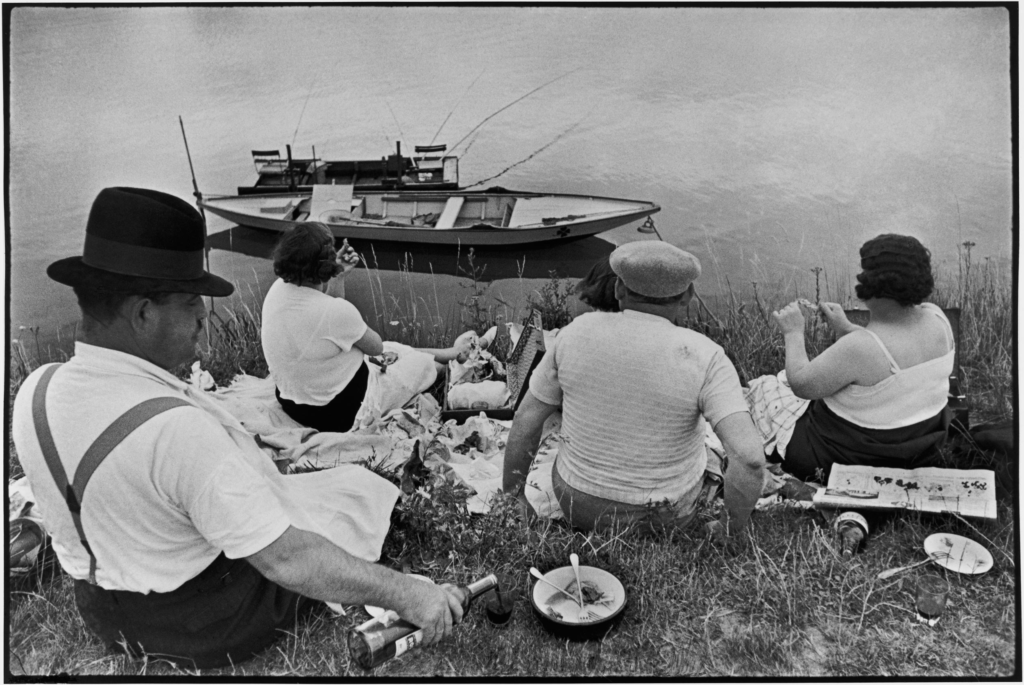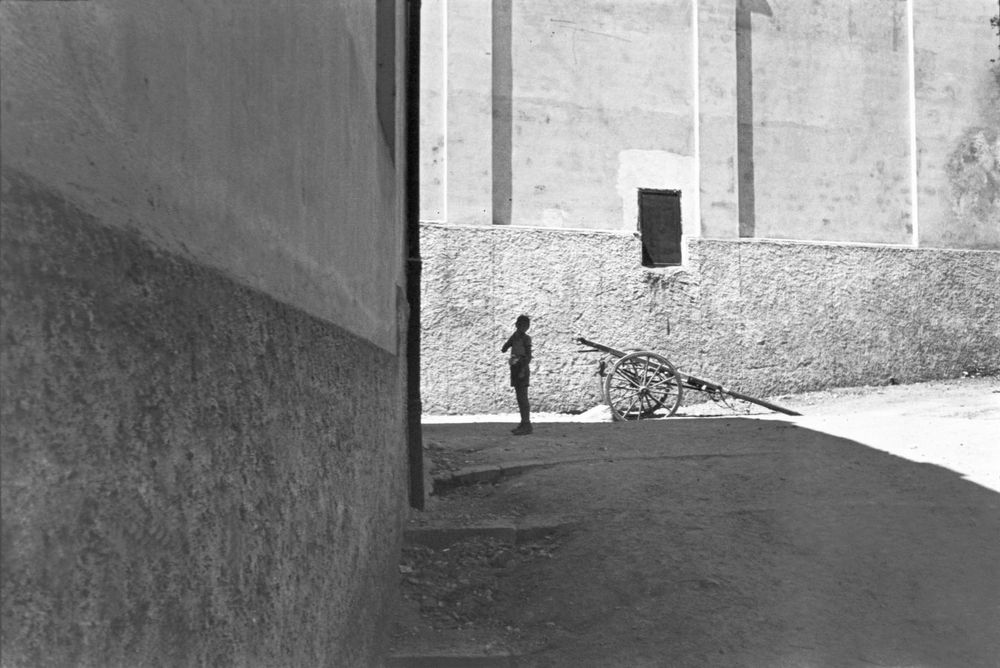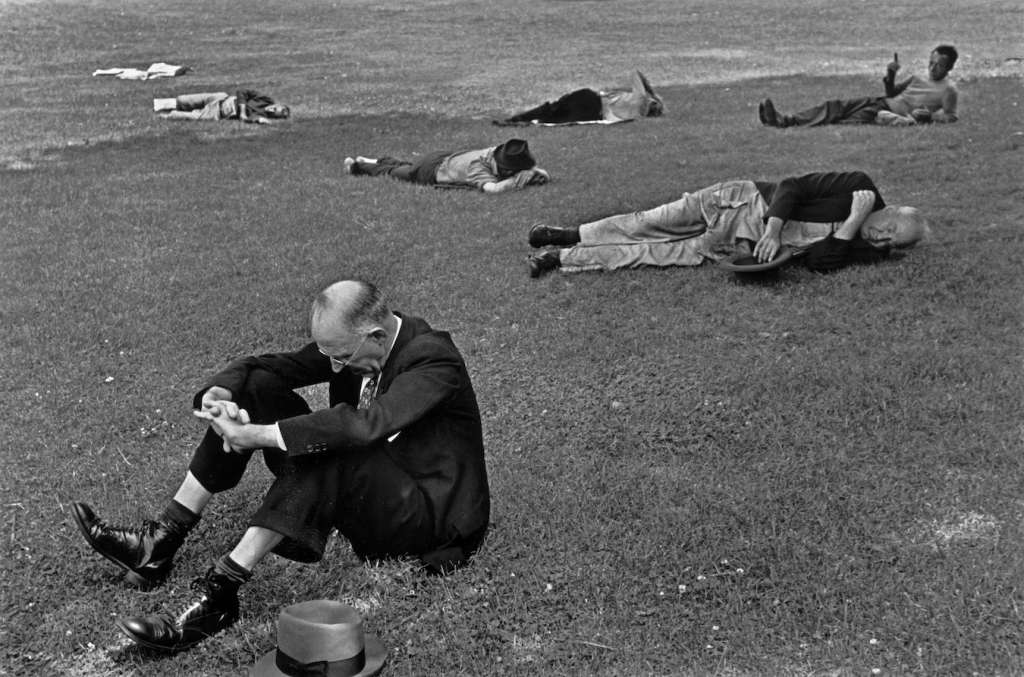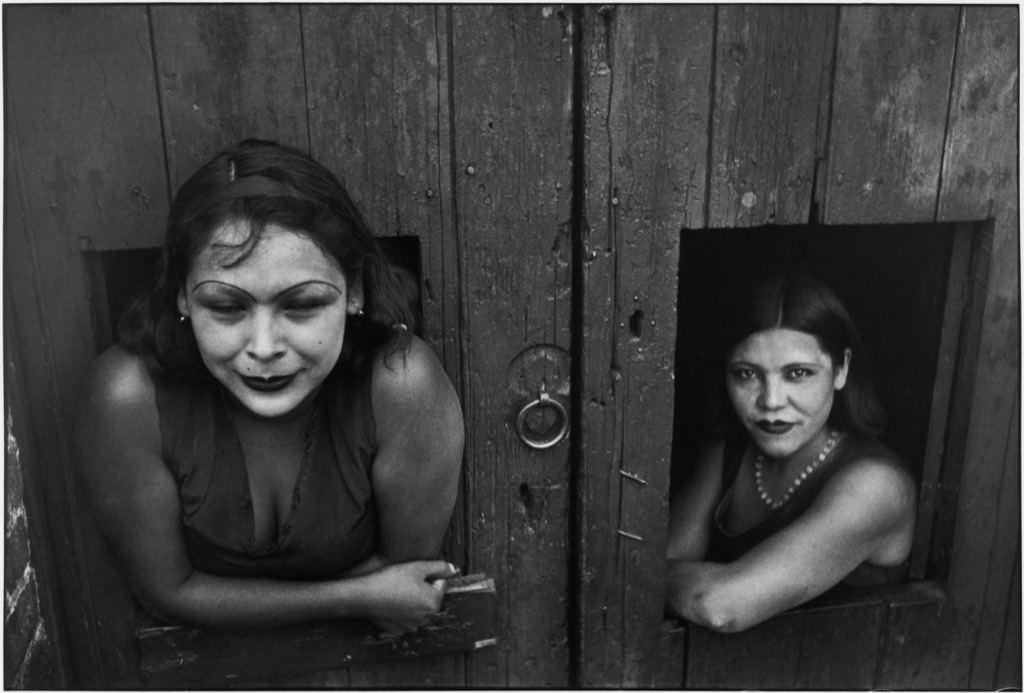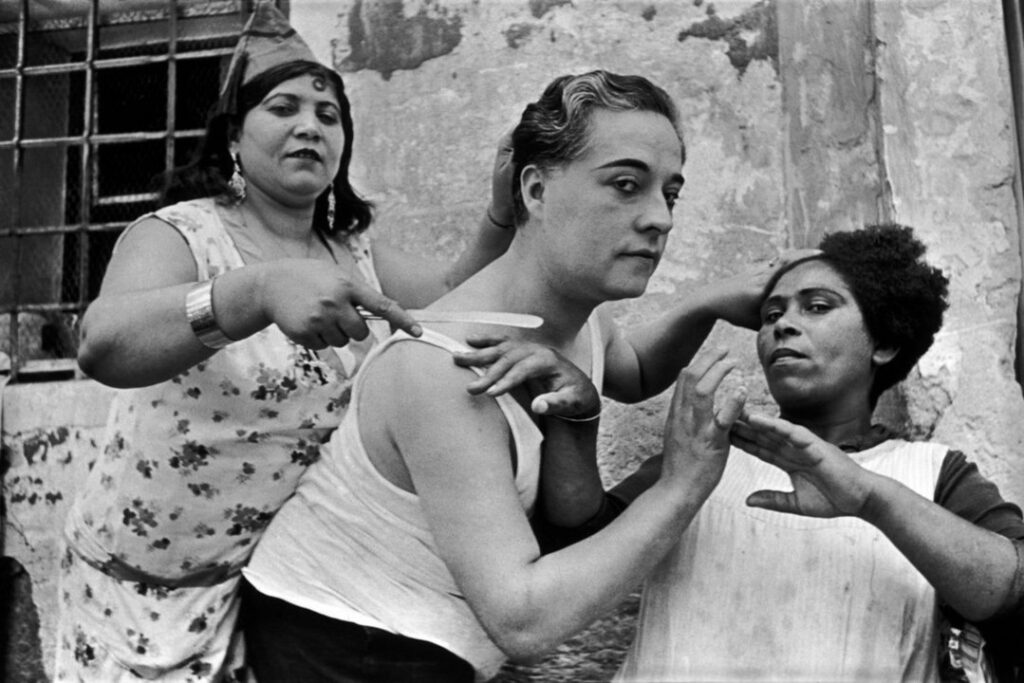Henri Cartier-Bresson Case study –
Henri Cartier-Bressons work, as he puts it, is a ‘physical pleasure’. By carrying a camera he says it is an ‘extension of the eye’. This can be seen in his collection of photographs that capture a preserved time capsule of day to day life.
Biography –
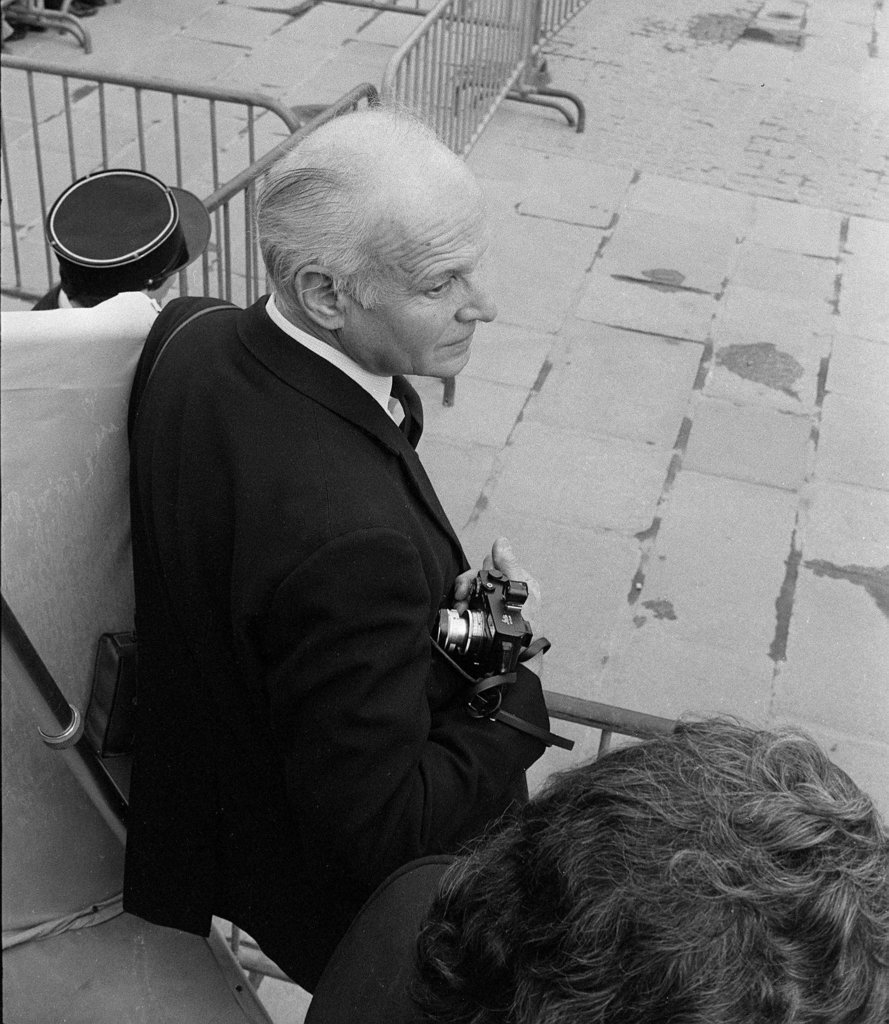
Born 22nd August 1908, in the outskirts of Paris in Chanteloup, Seine-et-Marne, Henri Cartier-Bresson grew up with an interest for art. Initially showing a fascination in surrealism painting, in 1932, during a year-long stay in the ivory coast, he discovered his passion for photography with a Leica, his camera of choice.
First exhibiting his artwork only a year later, It featured at the Julien Levy Gallery in New York. During the Second World War, Cartier-Bresson joined the French army, where he was promoted to a corporal in their Film and Photo unit. In 1940 during the invasion of France he was captured by German soldiers, up until 1943 he was a prisoner of war in which he managed to escape from on his third attempt. Joining an underground resistance network, he helped others escape from nazi captivity.
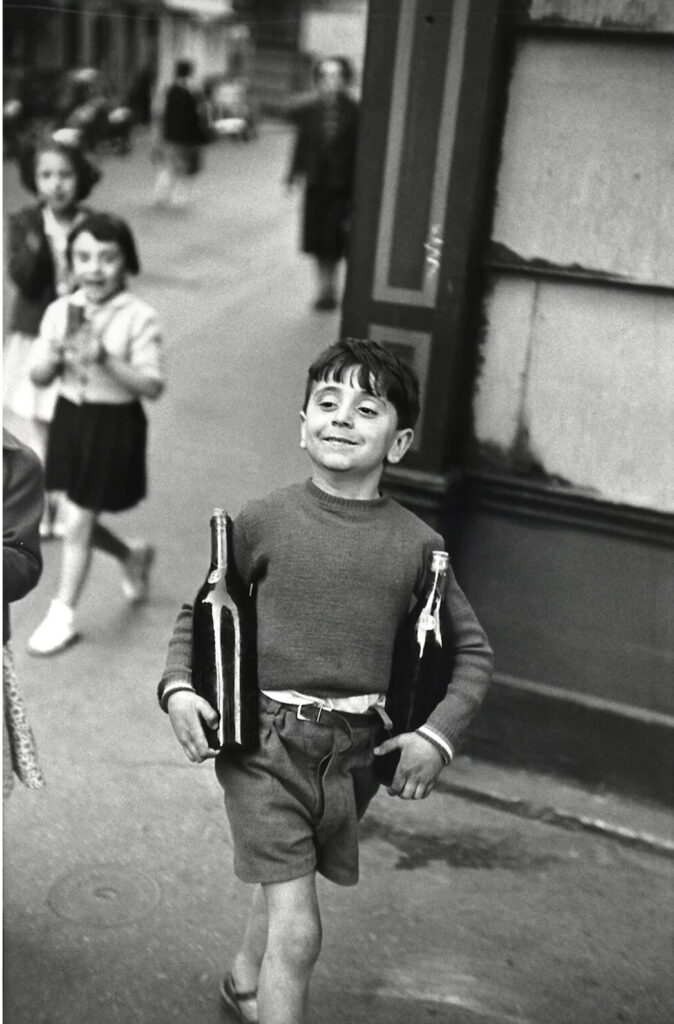
Rue Mouffetard, Paris, 1954
During the liberation of Paris in 1945, he photographed the allied victory with a group of professional journalists and then went on to film the documentary Le Retour (The Return).
Post war, he met up with other famous war photographers who served like him during the conflict, the most notable being Robert Capa, As well as some others like George Rodger, David “Chim” Seymour and William Vandivert, here they collectively founded Magnum Photos. An organisation that till this day, represents photographers, and exhibits and licenses their work.
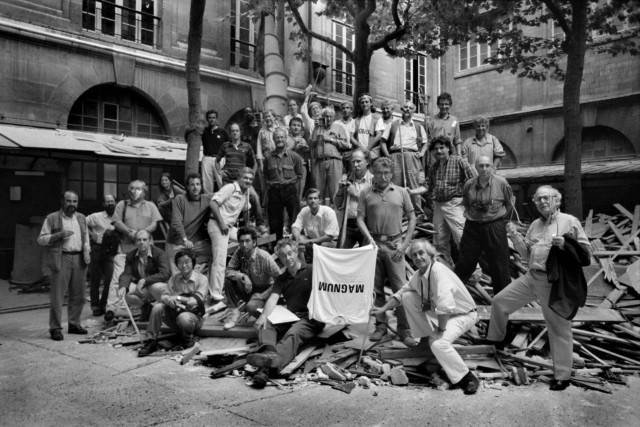
Magnum photographers during their annual meeting. Courtyard of the Lycée Fénelon, Paris. June 1990.
Spending 3 years travelling in the East, Cartier-Bresson retuned back to Europe in 1952, once returned, He published his first book, à la Sauvette, in english meaning ‘The Decisive Moment’.
In This book, Cartier-Bresson defines his approach to Photography…
“for me the camera is a sketch book, an instrument of intuition and spontaneity, the master of the instant which, in visual terms, questions and decides simultaneously… It is by economy of means that one arrives at simplicity of expression.”

A young Cartier-Bresson, holding his signature Leica.
Later on in life Cartier Bresson, made a return to painting in 1968. In 2003, his wife and daughter created the Foundation Henri Cartier-Bresson in Paris to preserve his legacy and his work. Throughout his lifetime, He had received numerous awards, prizes and honorary doctorates. A year later he passed away in his home, located in Provence on August 3rd, 2004.
’The Decisive Moment’ –
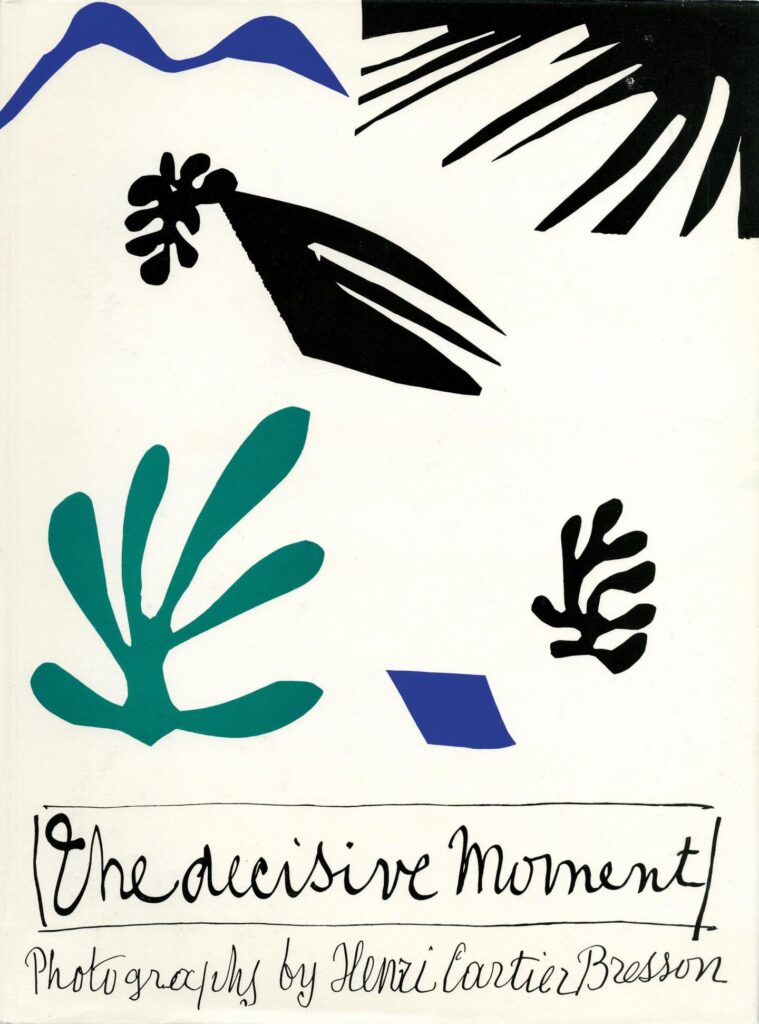
Henri Cartier-Bresson, in his book ‘The Decisive Moment’, created a series of images, pioneering in their unique story telling and have since been widely considered as one of the most important photo books of the 20th century. Described by Robert Capa as ‘a Bible for photographers’ his book is an interesting dive into the world through a camera.
The concept of the decisive moment comes from the idea that everything that occurs happens in a flow of events, In Cartier-Bresson’s eyes, there are moments within these events that contain a perfect arrangement within a frame. These moments are always spontaneous and often never repeat themselves, therefore making the photographer vigilant to be ready to capture that decisive moment.
Cartier-Bresson believed that the process doesn’t come randomly through attempts to capture that moment, it is up to the photographer to observe, anticipate and patiently wait for your focus to choose something you notice and let that be your decisive moment. To get the perfect image, timing and composition make up 2 strong factors in creating a impactful image such as Cartier Bresson’s. Another big part is the meaningful element, this can something that conveys an emotion or statement, for example a couple, someone doing a job, people enjoying something etc.
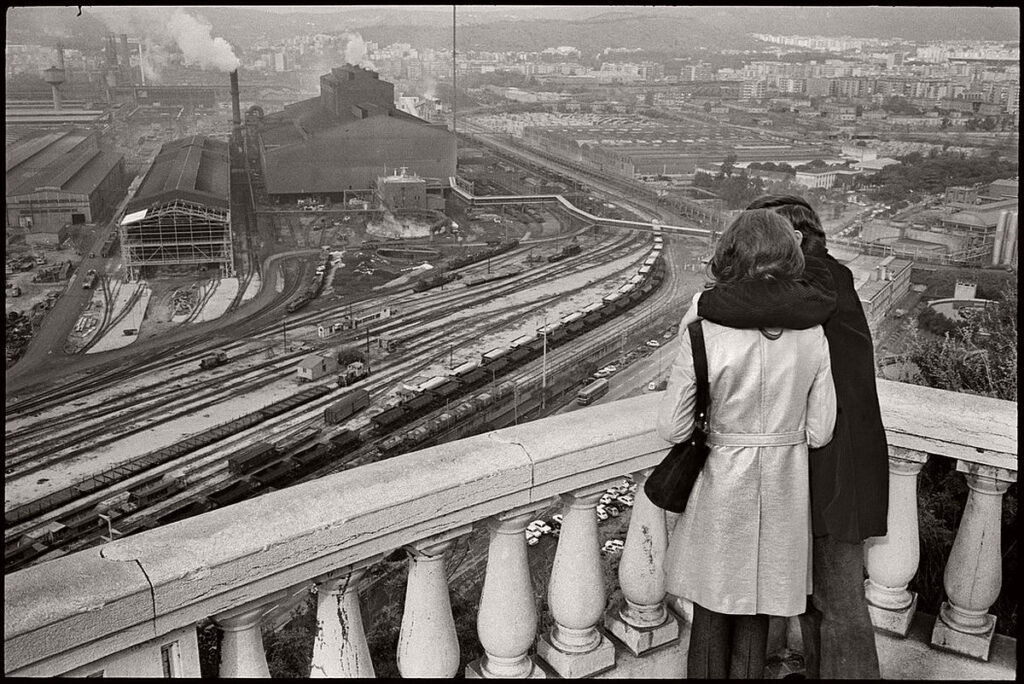
Mood Board –

